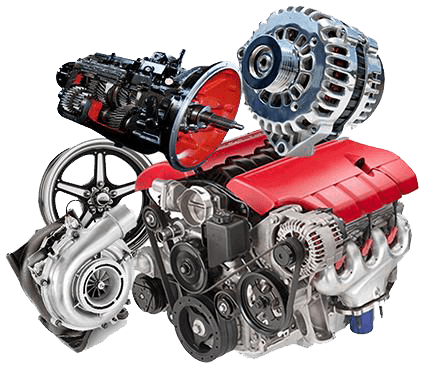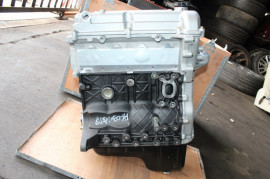Opel Corsa Engine: Efficiency and Dependability for Your Automobile
Opel Corsa Engine: Efficiency and Dependability for Your Automobile
Blog Article
Exploring the Inner Operation of a Compact Vehicle's Engine System
As chauffeurs, we typically consider granted the complex processes that occur within the boundaries of our automobile's engine system. The compact yet complicated equipment that thrusts us ahead is a wonder of design precision and sychronisation. From the controlled surges in the burning chamber to the precise timing of fuel injection, every component plays a crucial function in the smooth procedure of the engine. In this expedition of a portable lorry's engine system, we will certainly untangle the internal workings of this mechanical symphony, shedding light on the enigmas that drive us onward on our everyday trips.
Combustion Refine Review
The burning procedure in a portable automobile's engine system is an essential system that effectively transforms gas into energy to power the automobile. This process occurs within the combustion chamber of the engine, where fuel and air mix, spark, and produce regulated explosions. The burning procedure includes four primary phases: consumption, compression, exhaust, and power.
Throughout the intake phase, the piston relocates downward, reeling in a mix of air and fuel right into the burning chamber. The next stage, compression, involves the piston moving upward, pressing the air-fuel mix to raise its effectiveness. Ultimately, in the power stage, the ignition system sparks the compressed mixture, resulting in a quick expansion of gases that compels the piston pull back. This descending motion creates the power needed to drive the vehicle. Lastly, in the exhaust phase, the burned gases are gotten rid of from the burning chamber through the exhaust valve, preparing the chamber for the following cycle. This cyclic combustion process is basic to the procedure of a small vehicle's engine system, making certain effective energy conversion for propulsion.
Piston and Cylinder Interaction

The piston's exact fit within the cylinder is vital for keeping ideal compression and preventing power loss throughout burning. Limited clearances in between the piston and cyndrical tube walls ensure efficient securing, permitting the piston to move smoothly without permitting gases to leakage past. Correct lubrication is also crucial to minimize rubbing and put on in between these elements, improving long life and efficiency.
Furthermore, the style and products made use of in manufacturing the piston and cylinder effect engine efficiency and resilience. Modern engines commonly utilize lightweight yet durable products like light weight aluminum alloys for pistons and cyndrical tube linings to lower inertia and improve thermal effectiveness. In general, the unified interaction between the piston and cylinder is essential to the engine's capability and total performance.
Gas Shot System Performance
Fuel injection systems in portable car engines play an essential function in precisely providing gas to the burning chamber for regulated and effective ignition. The gas injection system operates by infusing fuel into the burning chamber at the optimum moment throughout the engine's operation (opel corsa engine). This precise timing guarantees that the gas mixes equally with the air for proper combustion, leading to improved gas efficiency and lowered exhausts
There are primarily two types of gas shot systems made use of in compact vehicle engines: port fuel injection (PFI) and straight gas shot (DFI) PFI systems infuse gas into the consumption port click resources prior to the consumption valve, while DFI systems inject gas straight into the burning chamber. Both systems have their advantages, with DFI offering far better gas atomization and PFI providing a more affordable option.
Comprehending Engine Air Conditioning Systems
Efficient procedure of a small automobile's engine depends greatly on the performance of its cooling mechanisms. Engine cooling is important to stop getting too hot, which can bring about significant damages and lowered performance. The air conditioning system in a compact car generally includes numerous elements working together to manage the engine temperature. One vital component is the radiator, which uses coolant to absorb warmth from the engine. As More Info the hot coolant streams via the radiator, it releases heat right into the air, cooling off prior to returning to the engine. The water pump distributes the coolant via the engine and radiator, guaranteeing a constant flow to regulate temperature. Furthermore, the thermostat aids regulate the coolant flow to maintain optimal engine temperature level. Some cars additionally have cooling down followers that trigger when added cooling is required, such as throughout rush hour or hot weather condition. Comprehending these engine cooling devices is important for keeping the performance and long life of a small car's engine system.

Exhaust System Components Explained
The optimum performance of a compact car's engine cooling mechanisms depends on a complementary system understood as the exhaust system, which consists of different crucial parts for guaranteeing effective emissions and engine performance. The exhaust manifold gathers exhaust gases from the engine's courses and see this website cylinders them to the catalytic converter.
One critical element of the exhaust system is the oxygen sensor, which checks the oxygen degrees in the exhaust gases to aid control gas consumption and make sure optimal engine performance. opel corsa engine. Additionally, the resonator may be present in some exhaust systems to minimize sound degrees. On the whole, the exhaust system plays a vital function in keeping engine efficiency, reducing damaging discharges, and ensuring a quieter driving experience for small car proprietors

Final Thought
Finally, the portable car's engine system is an intricate combination of parts that work together to assist in the burning process, transform fuel into energy, and eliminate waste gases. Comprehending the inner functions of the engine system, including the piston and cylinder interaction, gas injection system, engine cooling devices, and exhaust system parts, is crucial for preserving optimum performance and efficiency of the car.
The combustion process in a compact automobile's engine system is a crucial system that efficiently transforms gas into power to power the vehicle.Fuel shot systems in small lorry engines play an important role in exactly delivering gas to the combustion chamber for regulated and efficient ignition.There are mostly two types of gas shot systems used in portable vehicle engines: port fuel injection (PFI) and direct gas shot (DFI) Understanding these engine air conditioning devices is vital for maintaining the efficiency and durability of a small vehicle's engine system.
The ideal performance of a small vehicle's engine air conditioning devices depends on a complementary system known as the exhaust system, which makes up different necessary components for making certain efficient exhausts and engine performance.
Report this page